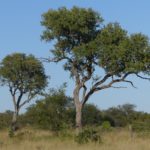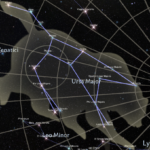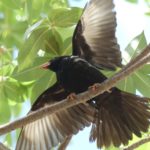In Southern Africa, fungus-growing termites, which build enclosed mounds without visible ventilation holes, belong to the genera macrotermes. These macrotermes mounds can be up to 6 meters high above ground. The tip nearly always leans slightly over, and the termite mounds face North, which can be taken as a reliable direction pointer.
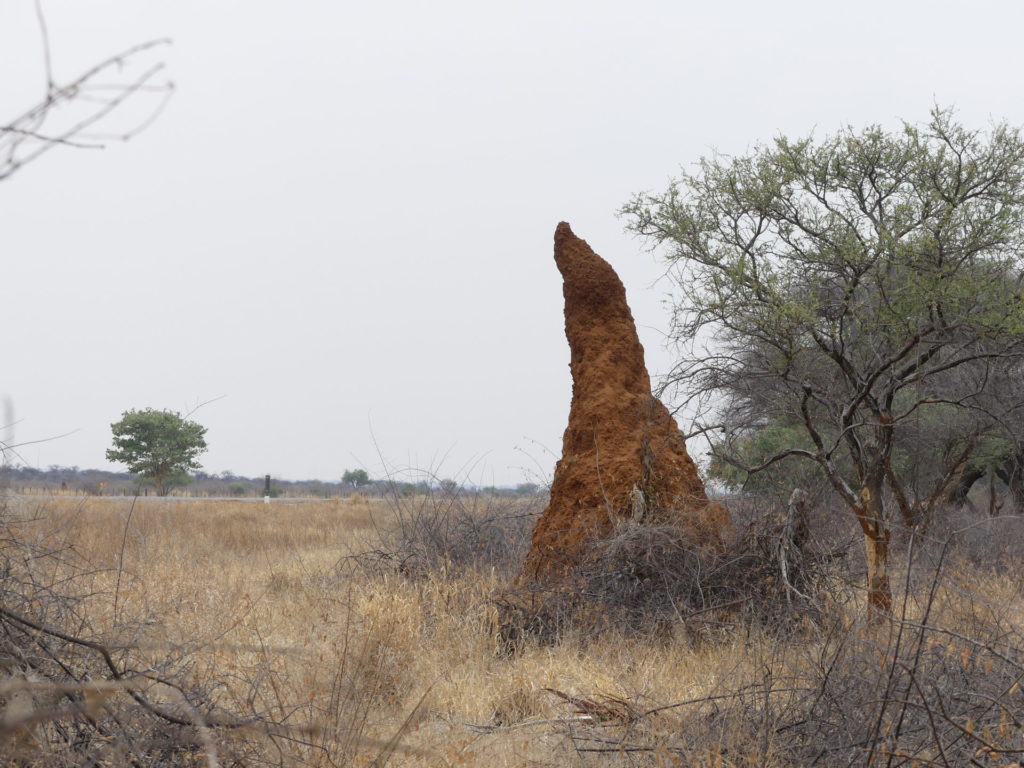
Generally speaking, such mounds consist of an outwash pediment, a conical base, and a spire with a tip on top.

Outwash pediment of termite mounds
The base area of and around the mount is called the outwash pediment. It is free of vegetation and consists of hard-baked termite mound material. This material was eroded by rain, wind, and sun from the base cone and spine. It is a mix of quartz grains glued together by clay particles and termite saliva. Research has shown that about one cubic meter of mound material will be washed down each year. And the same volume will be built up by the termites again.
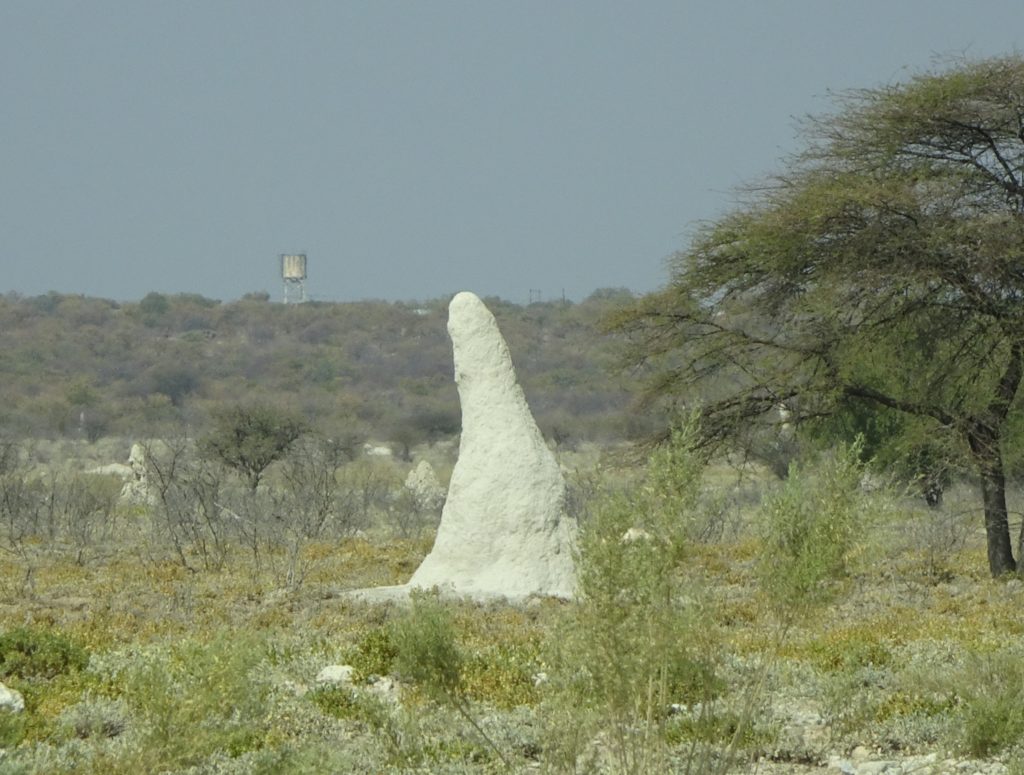
The size of this base area depends on a variety of factors. But for us, it is essential that it is also a reliable indicator of the direction East. Carnivores often lay up to the east of the mountain early in the morning. After a cooler night, they want to receive as much early sun as possible. The outwash pediment is free of vegetation and dry, which many carnivores prefer. The favorite laying-up areas of leopards, cheetahs, lions, and mongooses are often apparent at such mounds. It will be free of loose material and sometimes appear shiny from regular long-term use. And it is always located in the east of the mound.
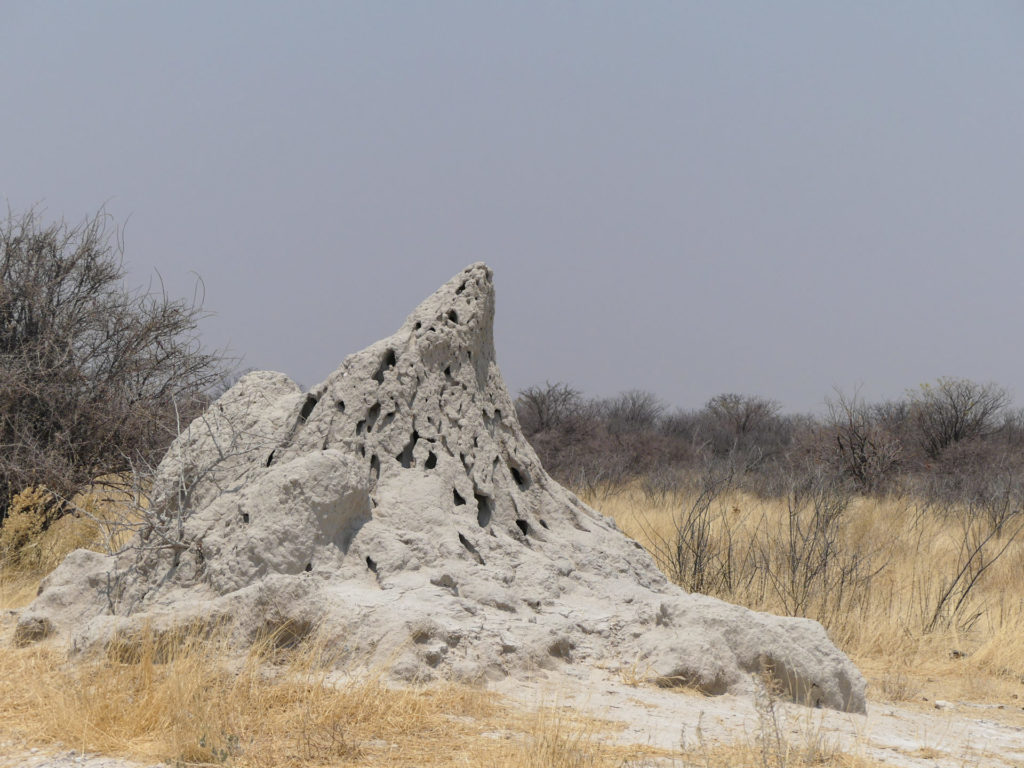
The conical base of termite mounds

The conical base is the lower uprising part of the termite mound structure. Outside it is a hard-baked shell and inside a porous structure with a multitude of chambers and channels. The conical base is, in many cases, to step for the laying up of mammals. The conical base is used as an elevated observation tower for men and beasts in an active mound. But when the termite colony dies, various insects, arachnids, and reptiles will colonize the former active mound. Humans have a particular use of these conical bases of some inactive Macrotermes mounds. They dig a hole into it and use this cavity as a baking oven. The excavated material can be used as a building material. This ‘Anthill’ soil is also used in Australia for concreting floors and similar applications. Eating the termites themselves was described in an article on this website.
The spire of termite mounds
The spire ends at the tip, which is our direction pointer. In the southern hemisphere, the sun rises in the east, moves over the north, and settles in the west. The sun’s position is highest in the north. Therefore, the termite mounds face in this direction.
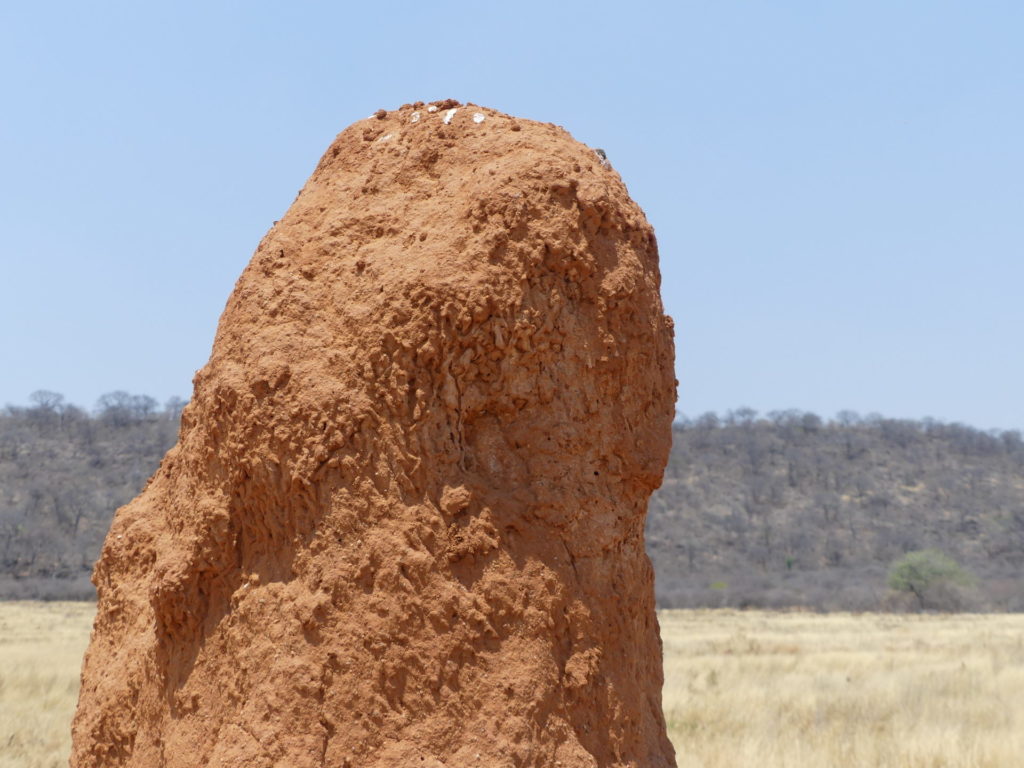
There are at least four theories on why the termite mound tip slightly leans to the north. These theories are:
Prevailing wind direction
The latest research by Fagundes TM, Ordonez JC, Yaghoobian N. 2020 shows here that wind does not influence overall over-ground mound shape but only internal mound structures and temperatures.
Magnet field influences
The influence of magnet fields is only confirmed for Amitermes meridionalis, commonly called compass termites. Their distribution is confined to the Northern Territory of Australia, specifically around Darwin. Such magnet field influence could not be proven for Southern Africa.
Partial drying out of the spine
This theory assumes that the heat from the sun is highest in the NNW-NW direction. Therefore, the chimneys within the spine dry out more on this northern side. Thus, the tip leans in this direction. Noon is not the hottest time of the day, as the heat of incoming sunrays still increases. Only after around 3 pm does the outgoing heat from the earth start to get higher than the incoming heat—an effect due to a lower sun position. Therefore, the most heated part of the termite spine is facing the North-North-West (NNW) to the North-West (NW) direction.

Average zenith angle
Measurements have shown that the tip of the termite mound always points to the average zenith angle of the sun. If a location in the southern hemisphere is at 20 deg latitude, the tilt of the tip will also be 20 deg to the north. And at the equator in Kenya, the sun will stand directly overhead. And there is no tilt of termite mound tips.
At a healthy termite mound, the erosion and new build-up rates are in equilibrium. On the side illuminated by the sun, the metabolic rates of termites will be faster compared to the cooler side. With a higher metabolic rate, the working speed of termites also increases. Therefore, the mound will grow with an increasing tilt. At least until temperatures and related soil transport rates are uniform over the whole surface. The weak point of this theory is that during the summer solstice north of the Tropic of Capricorn, the sun moves a few degrees into the southern sky. Will termites also build the tip of the spine towards the south during this occasion?
Summary of these theories
Both theories, ‘Partial drying out of the spine’ and ‘Average zenith angle’, have followers. It is not finally established which is the correct one or how both theories interact. Scientists will find the correct answer in time. What we know is that in Southern Africa, tips of Macrotermes termite mounds will, in the majority, point towards the North.
Lessons learned from Finding Direction North by Macrotermes termite mounds
- Macrotermes termite mounds have a conical shape and generally only one tip
- This tip leans toward the direction of the North
- Currently, two theories explain why this leaning toward the North happens.
.



